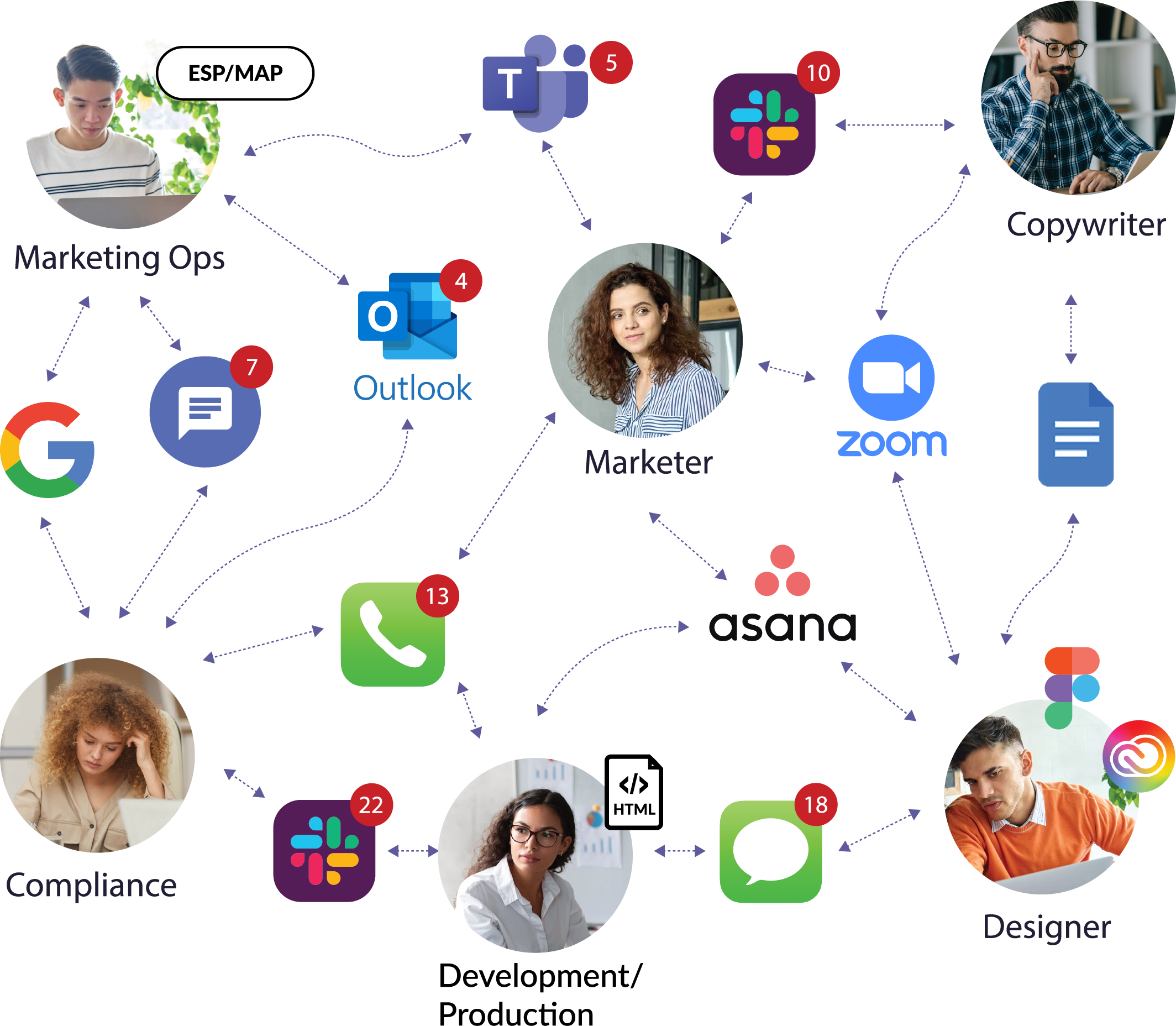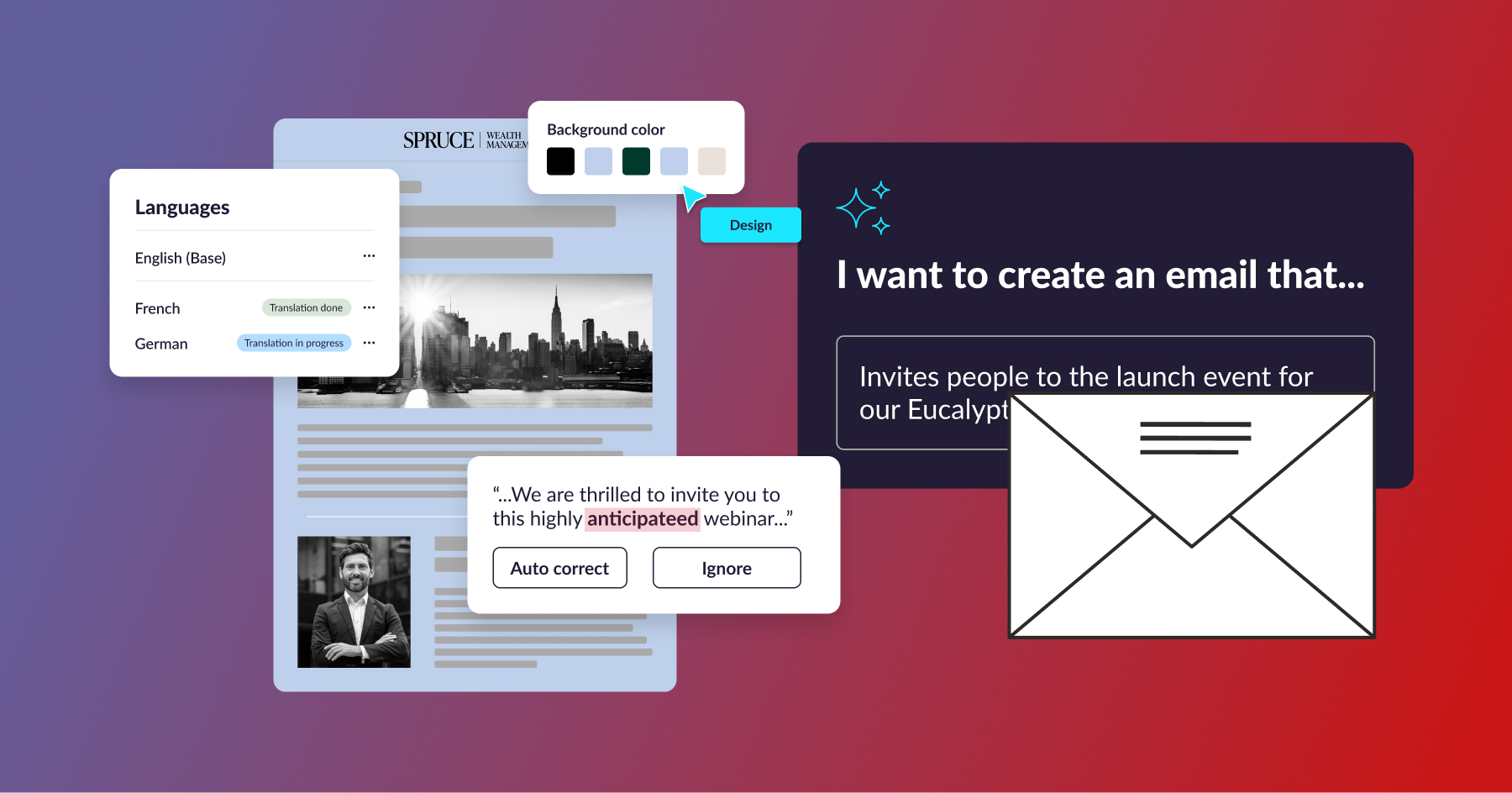If you’ve ever led a marketing team through campaign creation, you know: Process is either your greatest asset or your biggest liability.
In a perfect world, campaigns move from idea to launch like a well-run kitchen: Everyone knows their station, the recipe is clear, and the right dish goes out at the right time every time. In the real world? It’s often more like a potluck where no one remembers to bring the main course.
The difference comes down to one thing: control of the workflow. And not “control” in the micromanaging, approval-hoarding sense. We’re talking about a workflow so well-designed, so governance-led, that it runs itself. That’s when Ops can stop firefighting and start driving outcomes.
The process is the product
Campaign creation is no longer a linear relay race; it’s a multiplayer, AI-accelerated, globally distributed sprint. That complexity means you can’t depend on memory, heroics, or “ping me when it’s ready” governance.
When the process is left to chance, you get:
- Delays caused by bottlenecked reviews
- Brand inconsistencies across markets and channels
- Costly compliance misses caught too late
- Wasted cycles redoing work that should have been right the first time

But when you design the process to enforce the rules automatically, you get:
- Quality baked in from the start
- Parallel workstreams without chaos
- Clear ownership at every step
- Predictable, repeatable delivery at scale
That’s why controlling the process is how you deliver the outcome.
Governance-led workflows: your lever for scale
A governance-led workflow is one where brand, compliance, and quality guardrails are embedded in the creation process, not checked manually at the end.
- Centralize the rules so they’re applied consistently everywhere
- Decentralize execution so more people can create safely, without adding review cycles
- Automate the checks so compliance and QA aren’t bottlenecks
This is how top-performing teams scale campaign output without sacrificing brand, compliance, or speed and without burning out their Ops leaders.

The compounding effect of control
A well-controlled, well-governed workflow delivers more than error-free campaigns. It creates a compounding return on effort:
- Faster launches mean more market opportunities captured
- Fewer reworks free up resources for innovation instead of repair
- Consistent brand and compliance reduce risk exposure
- Operational insight lets you fine-tune for even greater efficiency
You don’t just want more campaigns. You want more campaigns that deliver. A controlled process ensures every asset, in every market, is on-brand, compliant, and built to perform from day one.
The Ops opportunity
In enterprise marketing, speed without strategy is chaos, and strategy without speed is stagnation. What you really need is velocity. And velocity is direction with power aka your team is moving fast toward the right goals with the right force behind them.
But most teams are leaking budget through inefficiencies, slowing launches, and undercutting ROI. And no amount of brilliant creative or AI hype will fix that if the foundation is flawed
For marketing operations leaders, process and workflow control is power. And through that you can influence:
- Speed: By removing handoffs and embedding approvals where the work happens
- Scale: By empowering more contributors without introducing more risk
- Strategic impact: By turning campaign creation from a cost center into a growth lever
All of that equals velocity. When you own the workflow, you own the outcomes, measured not in outputs, but in the business impact those outputs create.
Take control. Deliver outcomes.
Audit your current creation process. Identify every step where humans act as guardrails. Then move those rules into the workflow itself—automated, enforced, and invisible to the user.
Because when you control the process, you’re not just delivering assets—you’re delivering outcomes you can count on.


